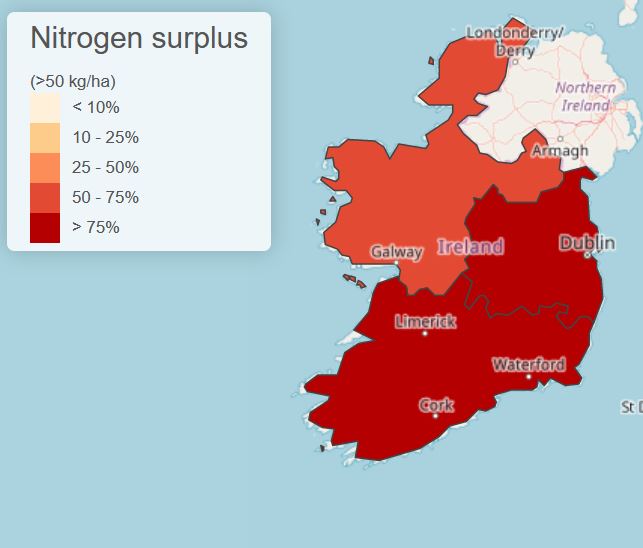Soils in Southern and Eastern Ireland have nitrogen surplus

Nitrogen is an essential nutrient for plant growth, and as such nitrogen-containing fertilisers and organic inputs are extensively used in agriculture worldwide. However, excessive nitrogen in soil is a major source of soil pollution, with consequences also for air, water quality and public health and contributes to greenhouse gas emissions. When nitrogen surplus exceeds 50 kg ha-1 per year in an agricultural land area, the environmental impacts might be significant.
The dashboard highlights the location and estimates the extent of unhealthy soils in the EU, as well as the degradation processes behind them. It was recently included in the EU Soil Observatory, developed and run by the JRC.
A staggering 61% of EU soils are in an unhealthy state, according to the dashboard. Most of them are subject to more than one type of soil degradation. The EUSO soil health dashboard is based on a set of 15 indicators of soil degradation processes, covering the following nine topics: soil erosion, soil pollution, nutrients, loss of soil organic carbon, loss of soil biodiversity, soil compaction, soil salinization, loss of organic soils and soil sealing.
